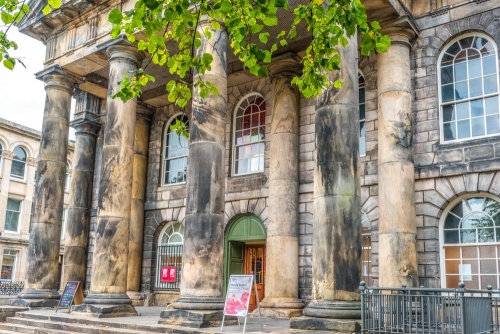
Preston may be the administrative centre of Lancashire but the historic city of Lancaster is the county town. The city has strong links to the British crown and is the centre of the Duchy of Lancaster (one of just two duchies in England). The monarch is the official Duke of Lancaster (even if, like Elizabeth II, the monarch is female).
History
The origins of Lancaster are linked to the Roman invasion of Britain. Sometime around AD 80, the Romans built a fort overlooking the River Lune. They rebuilt the fort at least six times over the following centuries before it was abandoned in the early 5th century.
Wery Wall
A short section of the 4th-century Roman wall stands below Lancaster Priory to the rear of Mitre House. Beside the wall are the remains of a 3rd-century bath house that probably formed part of the Praetorium, the official residence of the fort's commanding officer.
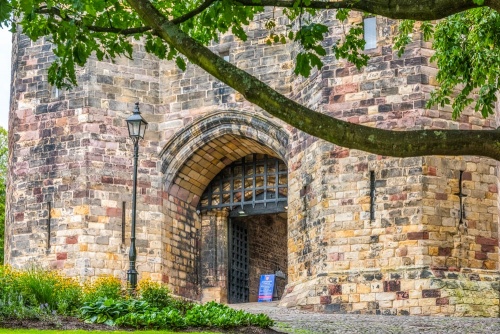
Very little is known of Lancaster from the departure of the Romans until the arrival of the Normans almost 700 years later, but it seems likely that there was a Saxon monastery here as early as the 8th century.
William the Conqueror gave Lancaster and the surrounding area to Roger de Poitou, an Anglo-Norman knight and the 1st Lord of Bowland. Roger de Poitou established a Benedictine priory here and built Lancaster Castle on the site of an earlier fortress.
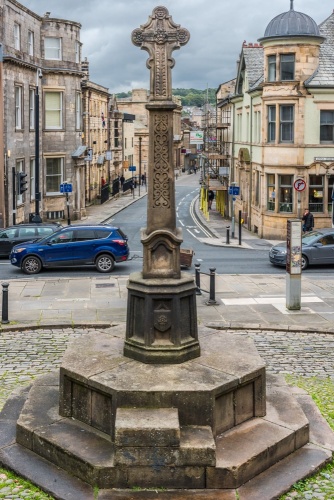
Lancaster Castle
Lancaster Castle has been many things during its long history; a Roman station, a Saxon timber fort, a Norman motte, a medieval castle of stone, and a notorious prison. The castle's history really begins in 1093 when Roger de Poitou, a kinsman of William the Conqueror, built a castle mound here.
The most impressive part of the castle is the Great Keep, which may have been built by King David of Scotland, who administered the castle during the civil war between King Stephen and Queen Maud. The Great Keep was large enough to hold the entire castle garrison and functioned as a castle with a castle.
The massive gatehouse entrance was added in 1399 by Henry Bolingbroke, the Duke of Lancaster. Under the Dukes of Lancaster, the castle served as an administrative centre, with courts, gaols, and judicial offices. The castle has served as a gaol and court since at least 1166.
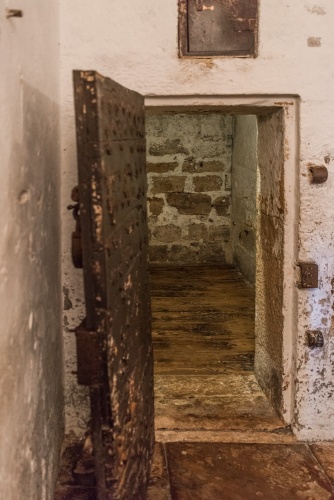
The Pendle Witches
The most famous case to be tried at Lancaster Castle was that of the Pendle Witches, 10 poor men and women from Pendle who were accused of witchcraft and executed in 1612 (an 11th accused witch was found not guilty and released). The case centred on accusations and counter-accusations between members of three families from Pendle.
Not only were they accused of practising witchcraft but of plotting to blow up the castle and kill the Keeper. The charge may have been manufactured, but it was sufficient to hang two men and eight women from specially-built gallows.
After the Civil War, the Castle ceased to have any military significance and was used purely as a gaol and courthouse. Visitors can take an excellent guided tour of the historic prison area and the opulent Georgian courtroom.
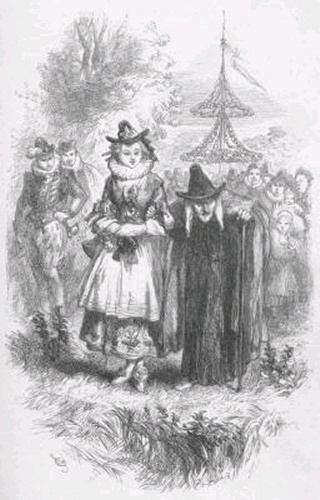
Cottage Museum
Across from the castle gatehouse is a modest 18th-century cottage that has been preserved as the Cottage Museum to show what life was like for an ordinary artisan 200 years ago. The house has five levels, joined by a very steep and narrow stair, with a wash house and privy in the back. The rooms are sparsely furnished, showing the spartan existence of the working families who lived here.
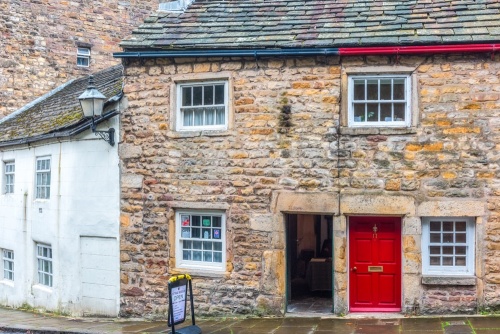
Lancaster Priory
The Priory and Parish Church of St Mary, Lancaster (or simply Lancaster Priory) began around AD 630. Saxon stones are incorporated into the west wall and fragments of Saxon crosses are on display in the north aisle.
The church was completely rebuilt in 1094 when Roger of Poitou, who also built the neighbouring castle, founded a priory on the site. St Mary's became the parish church of Lancaster in 1430 after the priory moved to Syon, near London. Most of the present church dates to the 15th century.
Historical highlights include 14 outstanding medieval misericords, with carvings depicting winged figures, monsters, lions, angels, priests, and human figures. Look for the memorial brass of Thomas Covell, who was elected Lord Mayor of Lancaster six times and served as the Keeper of Lancaster Castle for 48 years. Covell was the Keeper at the time of the infamous Pendle Witches trial in 1612.
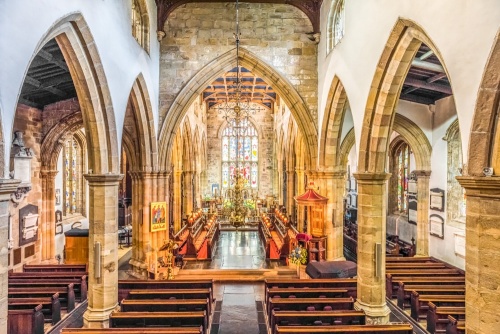
St John's Church
There is another historic church in the centre of Lancaster; the Georgian church of St John the Evangelist, which began as a chapel of ease for the Priory. The 18th-century period was a time of great prosperity for Lancaster and St John's reflects that wealth.
It is a very good example of a Georgian town church, with lovely round-headed windows flooding the interior with light, and a three-stage west tower rising to a small dome and a Gothic spire. The church fell out of use and is now maintained by the Churches Conservation Trust.
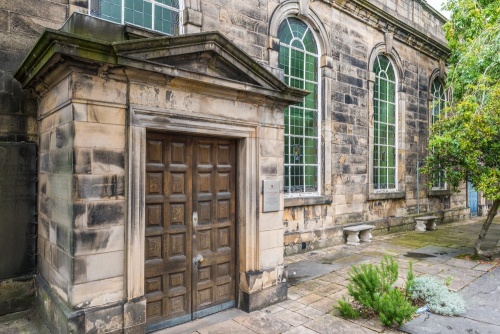
Lancaster City Museum
An elegant Georgian building in Lancaster's Market Square is home to the City Museum, where you can trace the long history of the town and region. The museum building was erected in 1781 and served as the town hall until 1910. The most important historical object is the Lancaster Roman Tombstone, a 1st-century gravestone carved with a mounted Roman cavalry officer with a decapitated enemy at his horse's feet.
See artefacts unearthed at Cockersand Abbey, a 12th-century monastery near Thurnham. There is an excellent display of objects from Lancaster Castle including the Constable's massive iron key. The City Museum houses the King's Own Royal Regiment Museum ((the 4th Regiment of Foot). The Regiment, founded in 1680, has close links to the city of Lancaster.
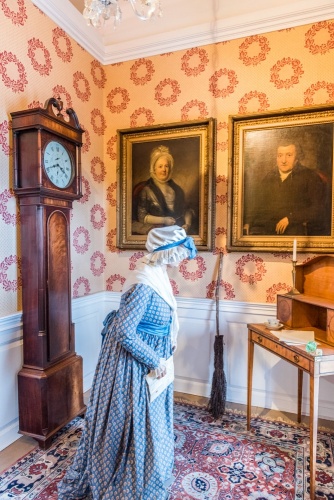
The Judges Lodging
At the top of Church Street stands an impressive 17th-century building known as the Judges Lodging - which is exactly what it was - a residence for judges at the Lancaster Assizes. The most famous resident was Thomas Covell, a former mayor of Lancaster who became a notorious witch hunter and had the Pendle witches locked in the Castle dungeons.
The Lodging is the oldest townhouse in Lancaster. It was built around 1625 and remained in use until the 1970s when it was turned into a museum.
Inside the Lodging is the popular Museum of Childhood, a family-friendly look at toys from 1800 to the present day. The Lodging also has an outstanding display of original Gillow furniture. The Gillow offices and workshop were a stone's throw away on Castle Hill.
Outside the Judges Lodging stands Covell's Cross, a commemorative cross erected in 1903 to mark the coronation of Edward VII the previous year.
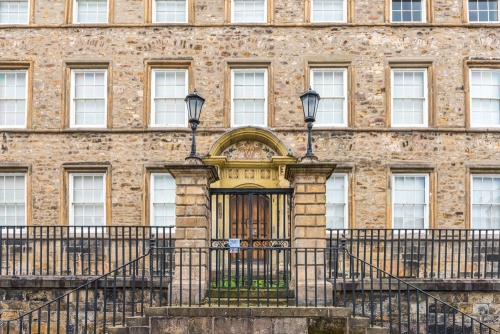
Maritime Museum
Trace the naval history of Lancaster in the Maritime Museum on St George's quay. The Museum occupies the former Custom House, designed by Richard Gillow, the famous furniture maker. Learn the story of the Lancaster Canal, the fishing industry, the development of Morecambe Bay, and Lancaster's links to the slave trade.
Williamson Park
One of the most popular places in Lancaster for both residents and visitors is Williamson Park, a 54-acre public park created by James Williamson. The park was created from quarries used to carve out stone for many of Lancaster's historic buildings.
In the park is the Ashton Memorial, an ornate Edwardian folly in Baroque style created by Lord Ashton, Williamson's son, in honour of his second wife. This exquisite building is known as the 'Taj Mahal of the North'. Inside the Ashton Memorial is the Williamson Gallery, offering fantastic views over the Fylde Coast and north to the Lake District. In Williamson Park is the Butterfly House, home not just to butterflies but small mammals and birds.
At the northern fringe of Lancaster is the Lune aqueduct, a stunning structure carrying the Lancaster Canal 16 metres above the River Lune. The Aqueduct was designed by the famous Scottish engineer John Rennie in 1797 and stretches 202m from bank to bank. You can take a cruise along the canal or simply enjoy a walk along the towpath.
If you feel energetic you can tackle the Lune Valley Ramble, a footpath following the River Lune from Lancaster to Kirkby Lonsdale, 17 miles away.
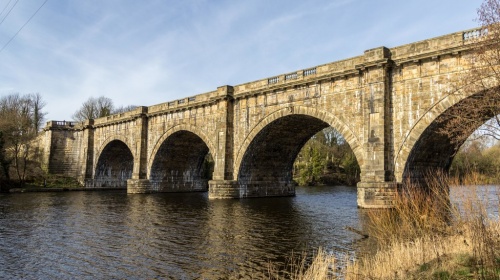
Gresgarth Hall Gardens
Four miles outside Lancaster is Gresgarth Hall, an early 19th-century Gothic mansion incorporating an earlier medieval building. Surrounding the historic Hall is 12 acres of gardens laid out by Arabella Lennox-Boyd and featuring a bluebell wood, garden terraces, a bog garden, lakes, herbaceous borders and a serpentine walk. The gardens are usually open one day a month for visitors.
Getting There
Lancaster lies just off the M5. Take either exit 33A or exit 34 and follow the brown tourist signs for the city centre. There are numerous pay and display car parks around the historic city centre, but I would advise against using the one on Meeting House Lane near the rail station, which is exceptionally expensive - as we discovered to our cost after we drove in and couldn't get out again without paying the extremely high charges.
The photo of the Lune aqueduct is (c) Peter McDermott and is republished with gratitude under a Creative Commons license.
About Lancaster
Address: Lancaster,
Lancashire,
England
Attraction Type: Town
Location: On the A588 off Junction 33A or Junction 34 of the M5
Website: Lancaster
Location map
OS: SD475615
Photo Credit: David Ross and Britain Express
HERITAGE
 We've 'tagged' this attraction information to help you find related historic attractions and learn more about major time periods mentioned.
We've 'tagged' this attraction information to help you find related historic attractions and learn more about major time periods mentioned.
Find other attractions tagged with:
NEARBY HISTORIC ATTRACTIONS
Heritage Rated from 1- 5 (low to exceptional) on historic interest
City Museum - 0.2 miles (Museum) ![]()
Cottage Museum - 0.2 miles (Museum) ![]()
Lancaster, St John the Evangelist Church - 0.3 miles (Historic Church) ![]()
Wery Wall and Roman Bath House - 0.3 miles (Roman Site) ![]()
Lancaster Priory - 0.3 miles (Historic Church) ![]()
Lancaster Castle - 0.3 miles (Castle) ![]()
Halton, St Wilfrid's Church - 2.5 miles (Historic Church) ![]()
Gresgarth Hall Gardens - 3.7 miles (Garden) ![]()



